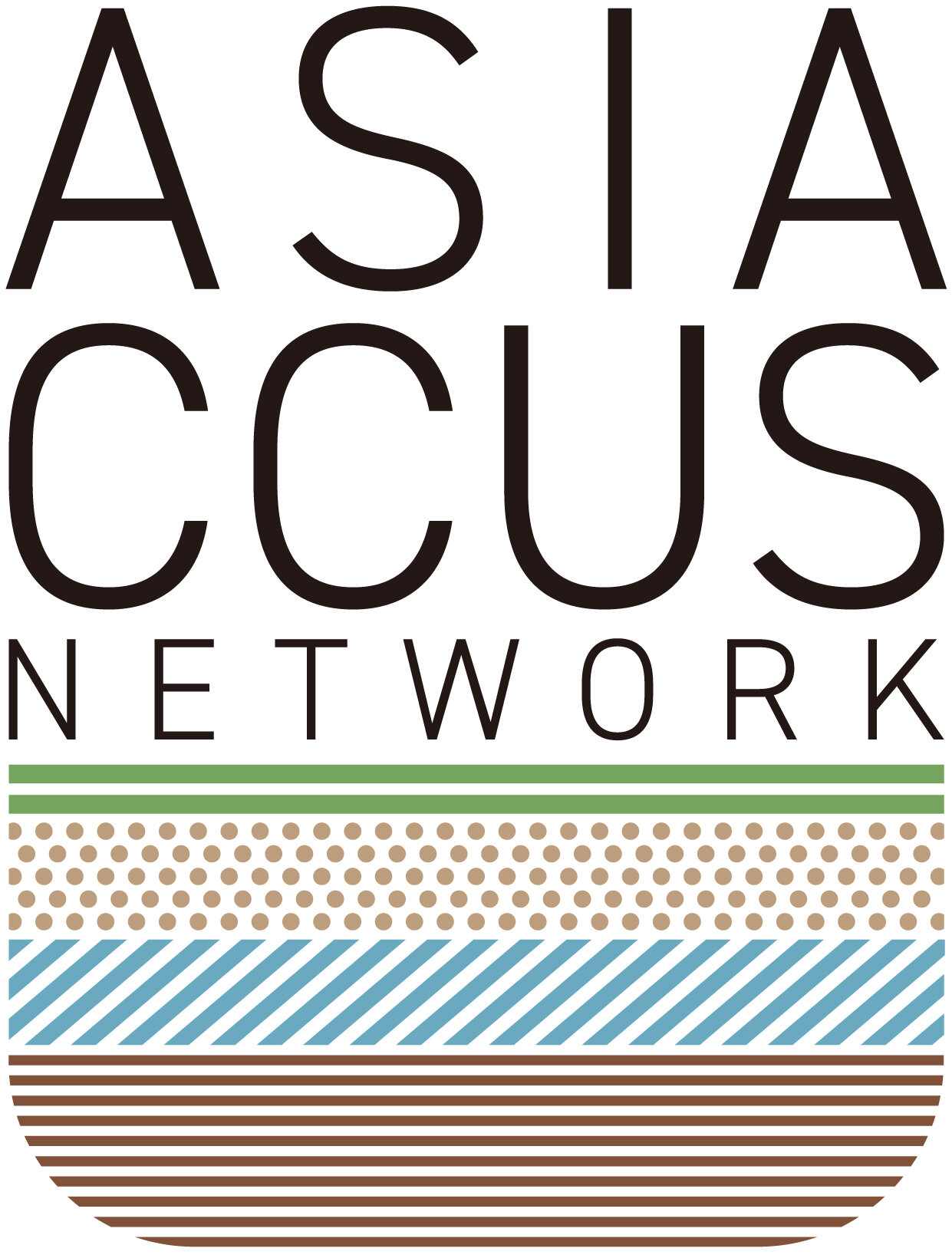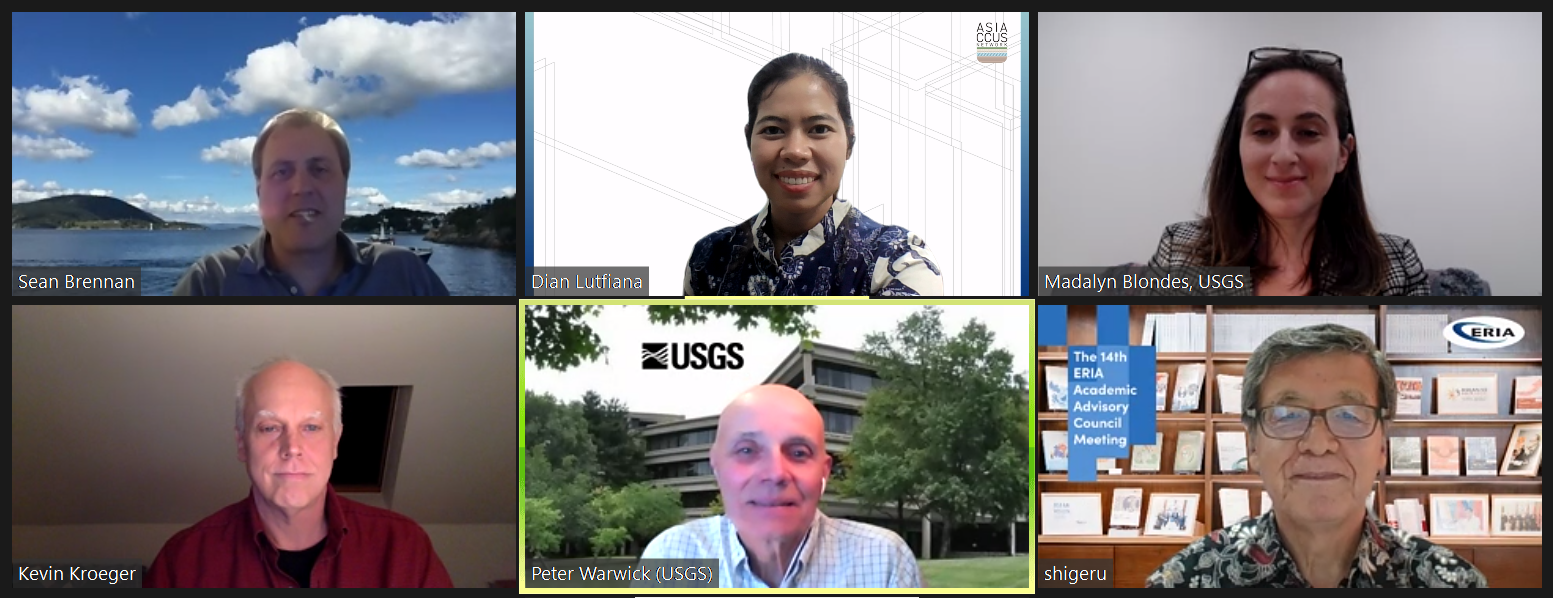USGS Introduces Geological Carbon Sequestration Concepts and Assessment Methods to Facilitate Climate Goals in Asia
USGS-ACN Joint Workshop, 23 June 2022: The United States Geological Survey (USGS) introduced its longstanding work on geological carbon dioxide (CO2) sequestration (or storage) capacity assessments and is inviting partnership with Asian countries for future geologic storage capacity assessment projects. The USGS together with the US Department of Energy is intensifying efforts to promote global geologic CO2 storage assessments, particularly in emerging economies. Through decades-long studies in geologic carbon sequestration, the USGS has the knowledge and expertise in this critical field which they would like to share with ASEAN and the Asia region.
The Economic Research Institute for ASEAN and East Asia’s (ERIA) Asia CCUS Network (ACN) partnered with the USGS in the latest joint capacity-building workshop on geologic CO2 storage resource assessments in the ASEAN region. Held on 23 June 2022, several USGS leading scientists presented various approaches for geological carbon storage and discussed methodologies for geological CO2 storage resource assessments. Through the event, the USGS sought to connect with members of the ACN’s extensive network interested in CO2 storage and assessment to realise global climate targets.
Mr Shigeru Kimura, Special Advisor to the President on Energy Affairs, ERIA opened the event and introduced the event’s first speaker, Dr Sean Brennan, Research Geologist, USGS Geology, Energy & Minerals Science Centre. Dr Brennan identified three objectives behind the pursuit of collaborative projects in Asia, namely: (1) To identify countries, especially emerging economies, seeking to estimate their CO2 storage resources to meet climate goals; (2) Work with multilateral organisations and participate in international initiatives to help facilitate CO2 assessments through funding or network; and (3) Generate or facilitate CO2 storage assessments on a global scale with a focus on emerging economies. Dr Brennan clarified during the Question and Answer (Q&A) session that while there is an emphasis on emerging economies, no specific countries from the category have yet been prioritised. There are several undertakings that the USGS can offer including assistance in identifying CO2 storage and prospective storage resources.
Dr Brennan outlined three phases of the USGS’ evaluation process: Prioritise and begin collecting data, conduct an assessment, and report on the findings. Much of the existing work by Dr Brennan’s team has been on residual and buoyant storage and predominantly in the US, marking the importance of future cooperation for information sharing and data availability purposes. Although the USGS has the methodology, talents, and knowledge to assist in completing a CO2 storage resource evaluation, Dr Brennan stressed that ‘Ultimately, we want to build capacity, help countries to do this work themselves. That is why training and assessment capacity building is integral to this work.’ Joint efforts between the USGS and a partner country will primarily require the assistance of geologists and petroleum engineers.
In explaining the probabilistic estimation methodology for analysing geologic CO2 storage, Dr Brennan clarified that the models developed are per region not project-site-specific or ‘where you can store CO2 as a whole.’ The organisation’s methodology has been endorsed by the International Energy Agency (IEA) and representatives from numerous national geological surveys as a ‘good method for determining the lowest level of the storage management system.’
During the Q&A session, several points concerning Carbon, Capture, Storage (CCS) and depleted reservoirs were made. Dr Brennan shared that storage in depleted reservoirs would be considered buoyant storage hence can be evaluated within the USGS’ methodology. In response to whether injecting CO2 can be done from an existing well within depleted oil fields, Dr Brennan emphasised the importance of ensuring the cement and casing can withstand CO2 injection as well as the potential for acidity associated with CO2.
Dr Peter Warwick, Science Coordinator for Carbon Sequestration and Energy Storage, Energy Resources Program, USGS led the scene of the third presentation concerning required data types for geologic CO2 storage evaluation. Different types of data are necessary when starting a storage project, however, a general geological map acts as the basic underlying base data. Permeability and a seal rock are equally integral when discussing the feasibility of storing CO2. One notable point that is of relevance for Southeast Asia is having a solid understanding of a country’s seismicity or earthquake record. Dr Warwick iterated that injecting CO2 could induce seismicity which may be more likely to occur in areas that have faults and therefore, it is not recommended to store CO2 in such locations.
Like many other national geological institutions globally, data collection has mostly been paper-based thus limiting the potential for data sharing and exchange. Dr Warwick suggests that countries consider methods to preserve the work that can be useful through time. Although there has been previous estimation work for CO2 storage in ASEAN, ‘there is room for improvement’ given that offshore studies have not been executed. Doing so is of particular significance for Southeast Asia because ‘there is quite a bit of potential most likely in the offshore region.’ An additional benefit is that because many studies have already been completed for the oil and gas sector, the available data can also be used for offshore CO2 storage considerations.
The Q&A session with Dr Warwick revealed that like Australia’s experience, the USGS also incurs difficulties explaining probabilistic resource assessments to individuals lacking familiarity with the industry given the highly theoretical capacity numbers. The USGS thus adjusted its communication strategies to overcome these instances by providing a detailed evaluation of its work.
Dr Madalyn Blondes, Research Geologist, USGS Geology, Energy & Minerals Science Centre detailed an overview of CO2 mineralisation of subsurface rocks and surface mine waste based on numerous US studies. Pilot projects have thus far shown promising results of rapid mineralisation of CO2 in basalts and ultramafic rocks where trapped CO2 undergoes a reaction to become carbonate mineral. The USGS referred to the Carbfix Project in Iceland as well as the Wallula Pilot in the Columbia River Basalts to study this CO2 management technology. In her presentation, Dr Blondes explained how proximity to point sources of CO2 and pipeline remain a priority when delving into these projects as it can also reduce costs. Dr Blondes stated that there is potential to apply CO2 mineralisation in Southeast Asia considering the types of rocks found in the US are also available in the region.
Dr Kevin Kroeger, Supervisory Research Chemist Lead, Environmental Geoscience Group, USGS was the last presenter to share his insights on CO2 mineralisation and carbon sequestration in coastal wetlands. This natural climate solution is of special relevance to Indonesia due to the crucial role of mangrove forests in this technology. This carbon management form has become ‘insignificant relative to today’s emissions’ and cannot offset major greenhouse gas emissions, however, Dr Kroeger believes that it ‘can be part of the carbon dioxide removal process.’ For Southeast Asia, carbon sequestration in coastal wetlands helps improve climate change adaptation by mitigating the risks linked to rising sea levels and climate change in general – which are all potential hazards to the region in the coming years.
In his Closing Remarks, Dr Warwick thanked the ACN for providing the USGS with the opportunity to present some of its research on geological CO2 storage resource assessments. The broad array of methods covered illustrates the possibilities of applying such methodologies in Asia. Dr Warwick expressed the USGS’ readiness to collaborate on projects for CO2 underground storage, mineralisation, and wetland restoration and encouraged interested parties to reach out to his team.
Before closing the event, Mr Kimura expressed his appreciation to the speakers for shedding light on the various ways carbon can be better managed. ‘Now we understand each other, and the next step is for us to start a collaboration between ASEAN and East Asia under the USGS’ expertise,’ he concluded.
Relevant Materials
A Probabilistic Assessment Methodology for the Evaluation of Geologic Carbon Dioxide Storage (https://www.usgs.gov/media/85185)
U.S. Geological Survey National Assessment of Geologic Carbon Dioxide Storage Resources and Associated Research (https://www.usgs.gov/media/files/us-geological-survey-national-assessment-geologic-carbon-dioxide-storage-resources-0)
Subsurface Carbon and Energy Storage Resource Assessments (https://www.usgs.gov/media/97269)
Carbon Dioxide Mineralization Feasibility in the United States (https://www.usgs.gov/media/97270)
Tidally-restricted coastal wetlands as a hotspot for carbon dioxide and methane emissions, and as a potent and untapped opportunity for anthropogenic emissions reductions
(https://www.waquoitbayreserve.org/wp-content/uploads/Kroeger_Carbon-Storage.pdf)

